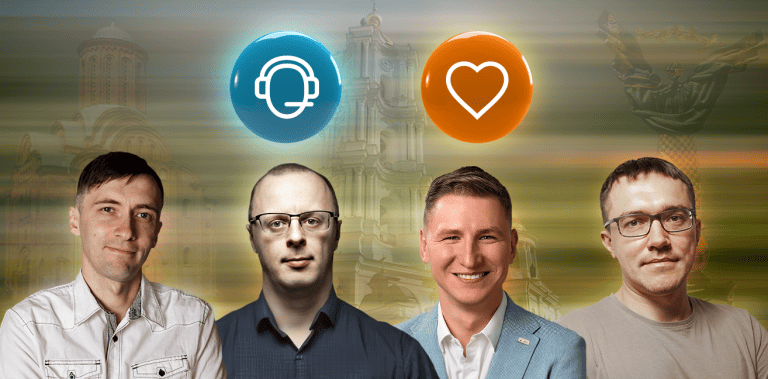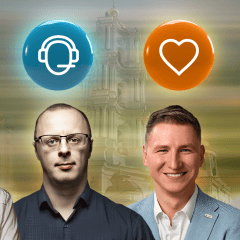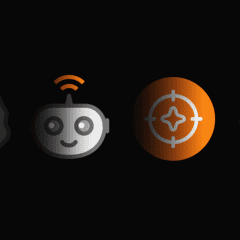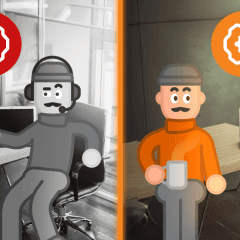Winston Churchill (or was it Reid Hoffman?) once wrote: “If you are not embarrassed by the first version of your product, you’ve launched too late.” By 2008, our founders were proud of PortaOne support, how it functioned, and the actual deliverables it gave to our customers. “When launching PortaSwitch in 2001, we considered our main product the installation disk and the source code we gave to the customer,” explains Andriy Zhylenko, CEO of PortaOne. “With time, we realized that while the actual code is an important part of our product, the main part is actually the professional and timely support we offer while maintaining PortaSwitch. Welcome: PortaCare.”
That is how the idea of PortaCare was born. “Many teams had built great telecom products, but very few could then provide the professional support those products required with a sound business model,” says Andriy. In part 1 of this PortaOne Support Saga, we presented the origins of PortaOne Support. Today, we bring you part 2. This is the story of how our support function not only evolved but “evolutionized” into PortaCare.
The Whiz Kid from Melitopol Who Led PortaCare Through Its Service Transformation Years
“I was born in Mariupol,” says Serhii Kirik, in a quiet but proud voice. He was the head of PortaOne Support from September 2013 to November 2015. Serhii was born out of a “student marriage” between two soviet engineers. His parents divorced when he was a small kid, and, after that, he moved to Melitopol with his mother. Melitopol, the “cherry capital,” is a city in Zaporizhzhia oblast in Southern Ukraine. Like Mariupol in 2022, Melitopol might soon become another symbol of the Ukrainian fight for freedom.
In part 1, you met Oleh Kostyuchenko. In that story, Oleh was creating a full-scale modern support department according to international standards and the zeitgeist of corporate tech culture. Serhii’s role, in comparison, was to invent a set of solutions to deliver customer service that is cost-efficient yet competitive. (And by competitive we mean to a degree that some customers call “exceptional.”) Most importantly, this customer service could be scaled to align with a growing PortaOne customer base. We branded it as PortaCare and PortaCare Premium. (The latter later became what you know as PortaCare Pro.)
A Unix-Based Christmas Present from Grandma
Serhii’s acquaintance with Unix started in the early 1990s with a book called Programming for Unix Systems. More than a decade later, this book secured Serhii a position at PortaOne. “It’s a hilarious story,” Serhii recalls. His granny-in-law worked at a publishing house specializing in professional literature. At that time, Unix was becoming increasingly popular among IT professionals worldwide, so the publishing house bought the rights to a critically acclaimed book on it.
“Something went wrong when they were printing the book,” says Serhii. “The printing press malfunctioned. The book cover got spoiled, and it became unfit for sale. Grandma was entrepreneurial, so instead of throwing away the spoiled book, she gave it to me as a Christmas gift.”
Serhii was a “polite kid,“ he explains. “Therefore, when grandma asked me if I had read the book she had given me, I read it all from cover to cover. Even though I could only partially understand some sentences.” That was likely the “aha moment” when young Serhii first realized his superpower of learning quickly, making sense out of vast chunks of unfamiliar tech information.
How a High School Math Olympiad Ultimately Influenced PortaCare
“My family ‘invited’ me to participate in a math competition for school students. [These were called “Math Olympiads” in our part of the world.] After I won several of these at the regional level, the organizers of the All-Ukrainian Math Olympiad noticed,” explains Serhii. “In the 1990s, that was a big deal for post-soviet school kids. [Let’s be frank here: it was a big deal for the parents’ egos.] However, that’s when I first discovered the high performer’s dilemma.”
The schoolmaster was so happy with the “school rankings” Serhii’s math success delivered that she prevented him from participating in the regional-level Olympiad, fearing he would switch schools afterward. “She simply told me I wasn’t invited to the next stage of the competition,” he says.
That’s when the natural sciences came to the rescue. The natural science teacher saw what was happening and invited Serhii to participate in the local Physics Olympiad instead. (“Physics” is the general term for the natural sciences in our part of the world.) Serhii won. Then he won the regional level as well. One of the organizers was also on the Math Olympiad org team. “Hey, kid, I remember you,” she said. “Why didn’t you attend the regional math competition?” That’s how Serhii and his family uncovered the truth.
A Bit of Attention, and a Bit of a Change
Winning both school olympiads got Serhii noticed. He received an offer to study at the National Physics and Math Lyceum in Kyiv. It is a weird soviet concept: take talented kids away from their communities and bring them all to a single “superschool” in the country’s capital. If you’ve ever read The Foundation by Isaac Asimov, the idea might sound familiar.
And so, that is precisely what happened to Serhii. The administration of the Lyceum invited “a teenager from a southern province, far, far away” to move to the metropolis, i.e., Kyiv. It was time for a “whiz kid” to get ready for his upcoming challenges in math, physics, systems thinking, and life.
Joining PortaOne and Becoming the Team Lead for PortaCare
“After graduating from the Lyceum, we all ended up in the Faculty of Mechanics and Mathematics at the National Taras Shevchenko University of Kyiv. That was before Kyiv Poly and Kharkiv Poly started challenging Shevchenko U’s dominance in IT education in the mid-2000s. One of Serhii’s university pals was his Lyceum classmate, Dmytro Manshilin.
“At some point, he told me he was now working for a Canadian company called PortaOne. He said they were making a softswitch for IP telephony and were looking for people with a Unix background. It all clicked together.”

The Differing Concepts of Telecom Customer Support (Such as PortaCare) in the Mass Market and SaaS
“When people think of customer support, most of them imagine it as a bunch of call center people wearing headsets,” explains Serhii. Back in the late 2000s and early 2010s, PortaOne support took the form of highly skilled telecom engineers and system administrators working async via issue tracking software tickets created by our customers. Today, we call these people “the DevOps.”
True, there was some call center communication. This was especially when a customer ordered a “dedicated support team.” This service was mostly popular among large enterprise accounts. However, many PortaOne customers were (and are) self-taught telecom entrepreneurs and tech-minded business owners. They also hired people managing PortaSwitch installations from the console or admin panel to run somebody’s business. Usually, those customers had no time for lengthy call center discussions, preferring issue trackers, screenshots, and screencasts.
And there is one more important factor. When dealing with complex issues, you have to process large chunks of logs filled with call traces, dumps of IP packets, and other highly technical information. Those needs often go beyond a simple phone call.
PortaCare and Application Level Functionality Consulting
Most of the support tickets PortaOne received in those times fell into one of two categories, explains Serhii:
- The technology level
- The application or business level
The technology level was for the DevOps. If you can picture those movie-style “hackers” who run green letters of code on black screens (or white… hello, the Terminal app for Mac), you’re spot on. However, the application level was also relevant. At that time, PortaCare was still waiting for a new generation of people who could explain the business side of PortaSwitch, not merely the technology behind it.
“Stop wasting your time on all those ‘business games.’ You have a huge backlog that keeps growing, @Mansh [Dmytro Manshilin] often told me during our numerous joint lunches,” Serhii recalls. And Dmytro was right. Our customer base grew exponentially between 2008 and 2010, and the ongoing financial crisis did not really affect the telecom sector. On the contrary, it fueled the first wave of online team collaboration in the quest for efficiency.
Application Support Engineers Fortify the PortaCare Team
Nevertheless, Serhii Kirik simply kept quietly investing time in improving his team’s skills in application-level consulting. He also drew our founders’ attention to the need for a new type of proactive customer care. In the 2010s, PortaCare “forked” the application support engineers — a profession that, today, combines the roles of product trainers, basic application developers, and support engineers at PortaOne.
Andriy Zhylenko tells the story: “When we explain the difference between regular support engineers and application engineers, the best analogy is a car mechanic and a driving instructor. Every car needs maintenance, and if something breaks down, it has to be fixed. That’s the job of a mechanic — or, in our case, the support engineer. However, when somebody buys a car, especially when it’s the first car ever, the problem is usually not that something is broken but that you yourself need to develop the skills to do what you need to do. For example, maybe you need to drive in the snow. To accomplish this short-term goal and get the required skills to do this independently in the future, you need a driving instructor. That would be an application engineer in our case.”
Application engineers create the customer journey together with the customer. They know how to use our products and can explain the optimal solution. After PortaOne created our Education Portal (we will cover the story behind this in a future chapter of this Suport Saga), the “application support engineer” course it featured became one of our most asked-for content pieces.
Moving to Chernihiv to Lead PortaCare
By 2007, Serhii had married. “Our young family had outgrown that small room at the university dormitory,” he says. So, when our PortaOne founders offered to move him to Chernihiv, where they had established a new technology office, Serhii gladly accepted.
PortaOne covered the relocation and apartment costs in Cherinihiv for Serhii and his family. The city boasted perfect nature with forests and groves alongside the beautiful Desna River with its beaches, and balanced that with rich architecture for weekend strolls. Plus, the cost of living in Chernihiv was substantially less than in Kyiv.
So that was all ideal. But, professionally, things were a bit more complicated for Serhii and his team. “By the early 2010s, Kyiv already had a flourishing IT cluster and a nucleus of various professional tech events and meetups. In comparison, Chernihiv was technologically deserted at that time,” he says. At first, it was a struggle to hire skilled people. At one point, it even looked like the whole relocation project would fail. However, persistence bore fruit.
“We had an amazing business leader, Viktor Korchenko, who was setting the right priorities and coming to the rescue with the new people right when it was a gulp of fresh air,” Serhii recalls.
Splitting the PortaCare Team Between Kyiv, Chernihiv, and Sumy
Serhii’s move to Chernihiv was part of a larger corporate strategy. Between 2005 and 2007, after the Orange revolution and overall public optimism for Ukraine and its future, many international customers intensified their scouting of the Ukrainian IT workforce. They discovered what PortaOne had noticed in 2001 while building our first R&D partnerships in Ukraine.
Ukraine was experiencing increasing growth in the number of talented people who spoke English and understood Western cultural values. There was also a sense of desperation for escaping the backward soviet mentality. At the same time, the country had a skilled workforce with low salary expectations and post-soviet self-esteem / personal identity issues. Anyone who paid on time and did not break employee bones for bugs in the code was considered a decent employer. On the other side, the Ukrainian tech workforce had a limited product vision — not because they were lazy or dumb, but because for half a century the country had primarily made nuclear warheads rather than consumer products.
The Kyiv Software Outsourcing Bubble
So it’s not surprising that numerous outsourcing companies entered the Ukraine market during that era. And by “Ukraine,” we mean mostly the large cities with over or close to a million inhabitants: Kyiv, Dnipro, Kharkiv, Lviv, Donetsk, and Odesa. Many of the mathematicians, school teachers, and defense engineers of the “hungry 1990s” discovered they could become the nouveau riche by learning some popular coding frameworks. (Hello, PHP, C++, Python, Ruby, JavaScript.) Others turned their attention to supporting popular server infrastructures. (Hello to you as well, Linux, FreeBSD, Apache, and various Microsoft products.)
What these new ecosystem players should have foreseen: all of those new projects had limited scope and duration. For obvious reasons, product owners in Europe and the United States did not want to outsource their core product competencies to Ukraine. This situation left Ukraine’s IT market disbalanced for over a decade: we had many sound software engineers, but only a meager group of people who could build actual IT products.
The PortaCare Team Comes to Chernihiv
Let’s jump ahead a bit now. The PortaOne founders started looking for alternative destinations for engineering talent. “Chernihiv was a two-hour drive from Kyiv’s center and a one-hour drive from Boryspil International Airport. It had a good tech university yet a limited number of tech employers. We decided to give it a try,” recalls Andriy Zhylenko. A decade later, that “try” is ranking PortaOne among the top tech employers in the region.
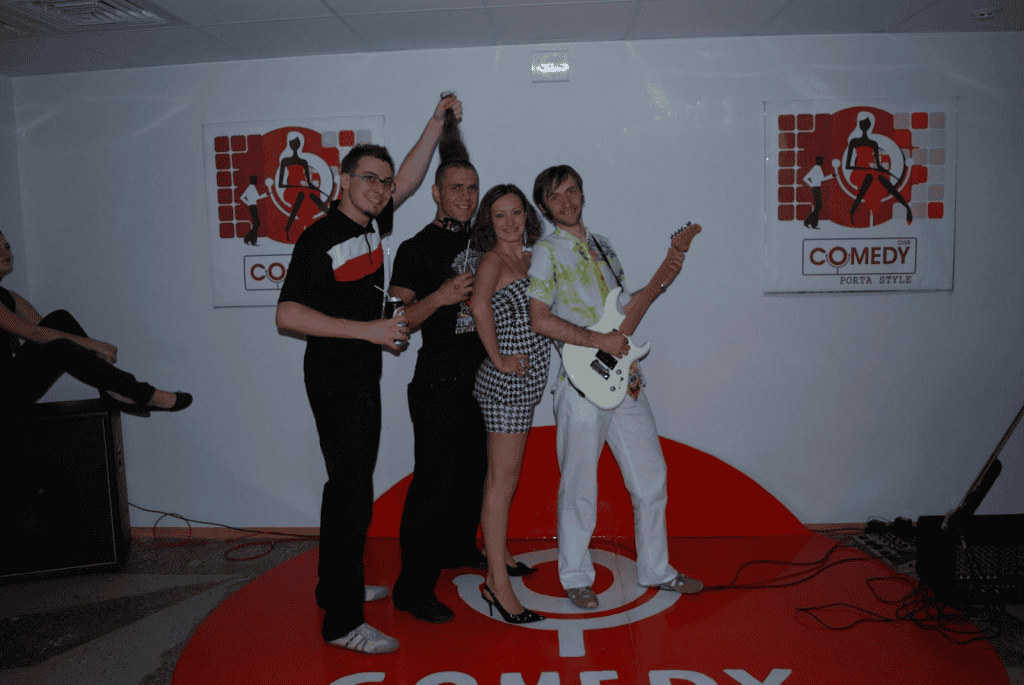
As of 2023, Chernihiv is the base for 3 out of 7 of our support groups, the DevOps team, four developer teams, and the QA department. However, with the lines between digital and physical workspaces blurring — it’s harder to define “Chernihiv” now. We have people working from Europe, Western Ukraine, and Kyiv who describe themselves as “coming from Chernihiv” and belonging to the Chernihiv tech cluster with their professional and personal network.
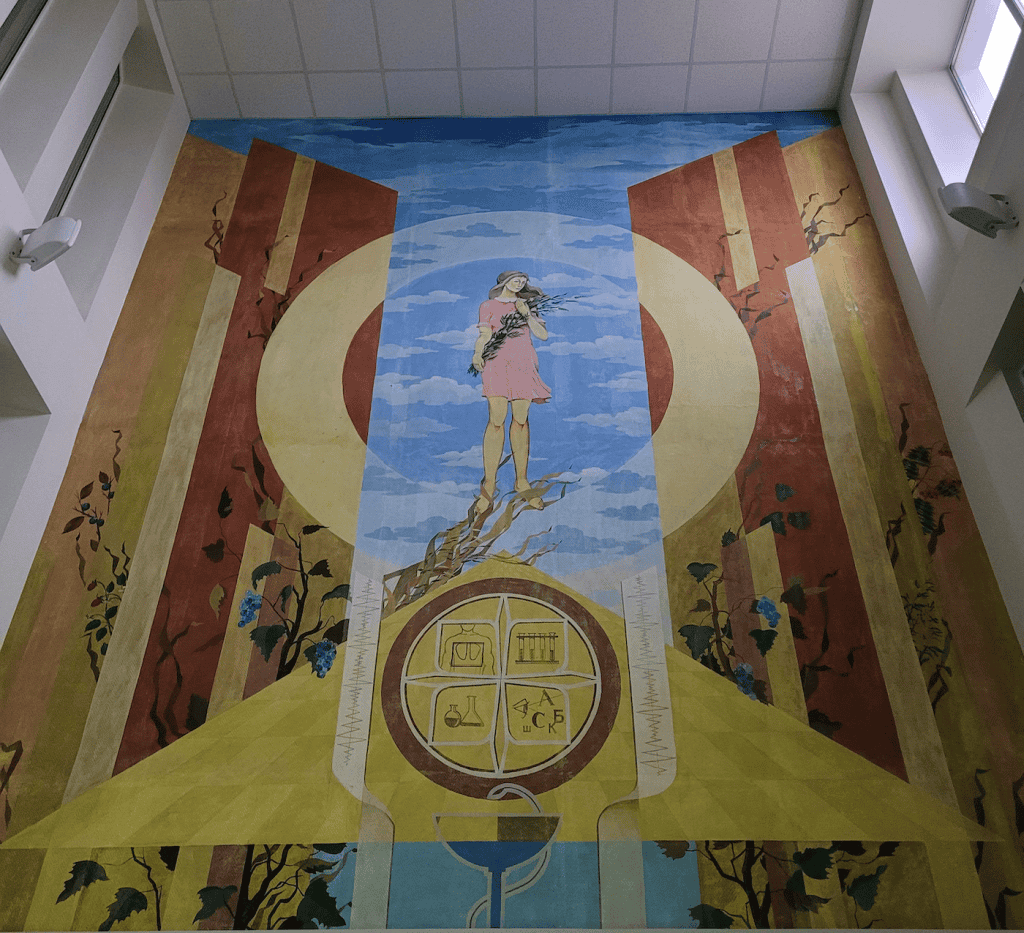
Serhii Kirik uses his math-themed humor to explain the success at Chernihiv success as the [Victor] Korchenko law — “Victor always tells me: achieve some quantity, then with time this quantity will turn into quality,” Serhii writes in a Slack message.
The Korchenko Law
While at first the Chernihiv technology team did not really have a lot to offer in terms of expertise, with time, Chernihiv grew its technology muscles by constant trial and error. It ultimately drew the “high-nosed” Kyiv technology team into niche competence areas. By 2014, “the PortaCare feud” was over — Chernihiv became the undisputed center of technology competence for PortaCare and many other PortaOne core product functions. A little later on in this story you will meet Oleh Shevtsov, who is a good example of this shift.
But First: Welcome, Sumy!
After the Chernihiv PortaCare team started getting noticed and requested by our customers, PortaOne decided to proceed with one more tech destination. “Much like Cherihiv in late 2000s, Sumy was a city of untapped potential in 2010 and 2011,” continues Andriy Zhylenko. With many tech universities and a decaying defense industry (which in the soviet times was the primary source of the city’s economic growth), young people from Sumy were looking for employment in Kyiv, Kharkiv, Dnipro, or abroad.

“After Cherhiv, we understood that the key to building a successful regional office is finding a good leader with a vast local personal network. Luckily, we found Alex Rot-Serov,” explains Andriy Zhylenko. Alex was pursuing a career in local law enforcement, working for the cyberpolice. “However, I dreamed of becoming an IT entrepreneur. And there were not many options in Sumy then,” says Alex with a smile on a Zoom call in summer 2023.

A Manner of Speaking
“Alex’s communication skills are unique. Soon after joining PortaOne, he became my partner-in-sales,” explains Roman Khalenkov, chief commercial officer at PortaOne. Therefore, Mr. Rot-Serov combines various functions: administrative leader of the Sumy office, PortaOne sales executive and product coach, and (even) host of the PortaOne Virtual Customer Conference.
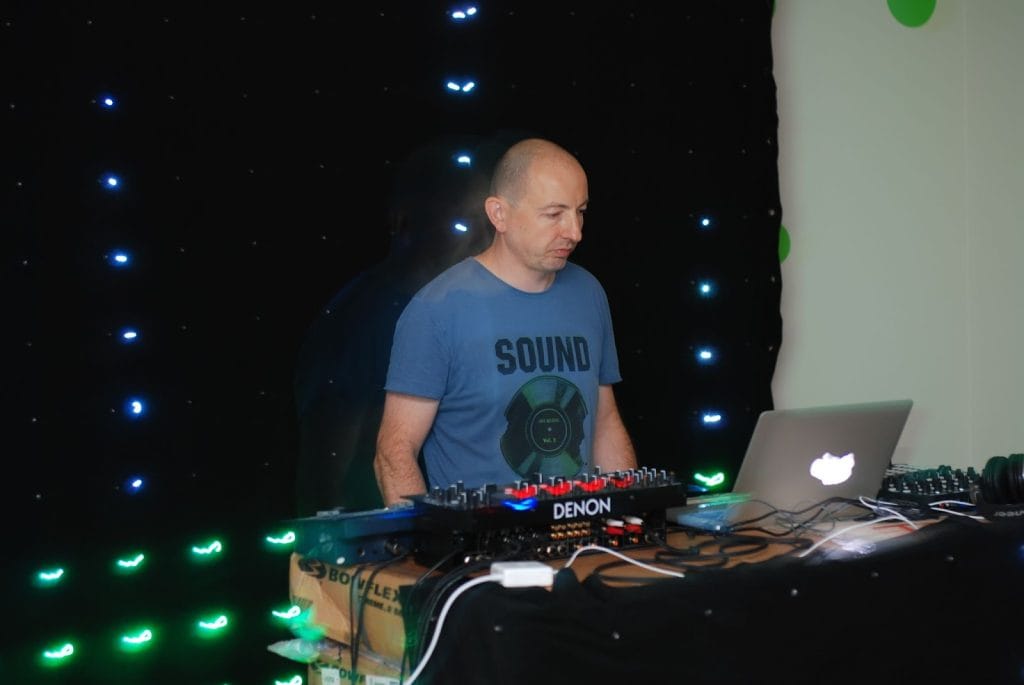
Oleh Shevtsov — “The Fixer of Kyiv”
“First, I thought PortaOne was hiring me to expand its customer support department in Kyiv. Then it turned out they hired me to fire people and scale down our Kyiv office in response to the 2008 Global Financial Crisis,” jokes Oleh Shetsov. Oleh joined PortaOne in 2008, precisely before the “big move” from Kyiv to Chernihiv began.
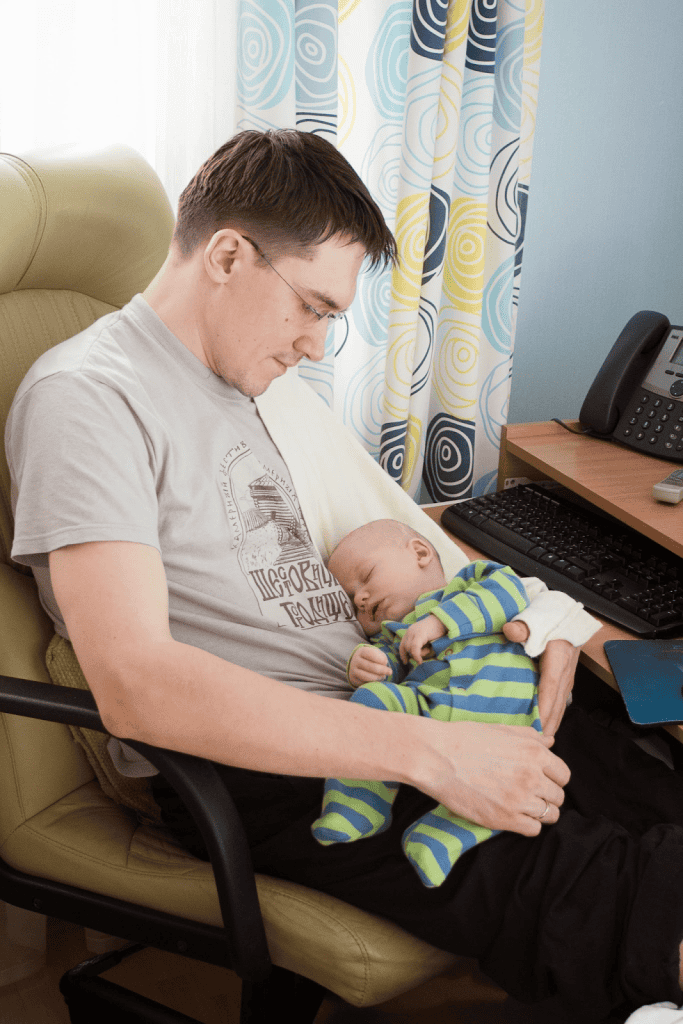
However, together with scaling down the Kyiv office, Oleh created a Premium PortaCare team from Kyiv’s most skilled support engineers. “The salaries had to be higher in Kyiv. Otherwise, given the surrounding Kyiv IT hype and the salaries bubble of the late 2000s, we simply could not get the right people,” he recalls. “However, the Kyiv team had to permanently demonstrate the additional value it gave to the PortaOne technology ecosystem. It forced us to create smart solutions to survive the expertise competition first with Chernihiv and then with Sumy.”
The Oracularius
“With PortaBilling Oracularius in 2009, we were targeting a new market — enterprise. It opened a new level of sales opportunities, yet it also required a new level of customer support,” recalls Roman Khalenkov. Oleh Shevtsov adds: “Oracularius offered a great opportunity for the survival of the Kyiv technology team.”
Large, internationally owned corporations of the Ukrainian enterprise class — these were the typical Oracle customers. And typically, they relied on foreign teams and expat CTOs. Those local specialists who knew Oracle products well quickly advanced their corporate careers in Ukraine and usually immigrated or signed long-term contacts abroad. That was lucky for them… and quite unlucky for PortaCare. “I moonlighted to learn Oracle RAC, Clusterware, and Enterprise Manager and invited my Kyiv colleagues to the same. Within several months, we had a strategic competitive advantage over other regional teams,” Oleh recalls.
Tuning the PortaSwitch Performance within Customer Premises
Equipment tuning for customer installations of PortaSwitch was another vast area of expertise. It added value for the Kyiv office after the nexus of PortaCare support operations migrated to Chernihiv and Sumy. “By the early 2010s, the cloud wasn’t yet there for telecom. So, bare metal equipment still mattered a lot to our customers. We learned to fine-tune the energy efficiency settings for CPUs and safely tune the storage on customer equipment, producing maximum performance. For large customers, that sometimes saved hundreds of thousands of dollars.”
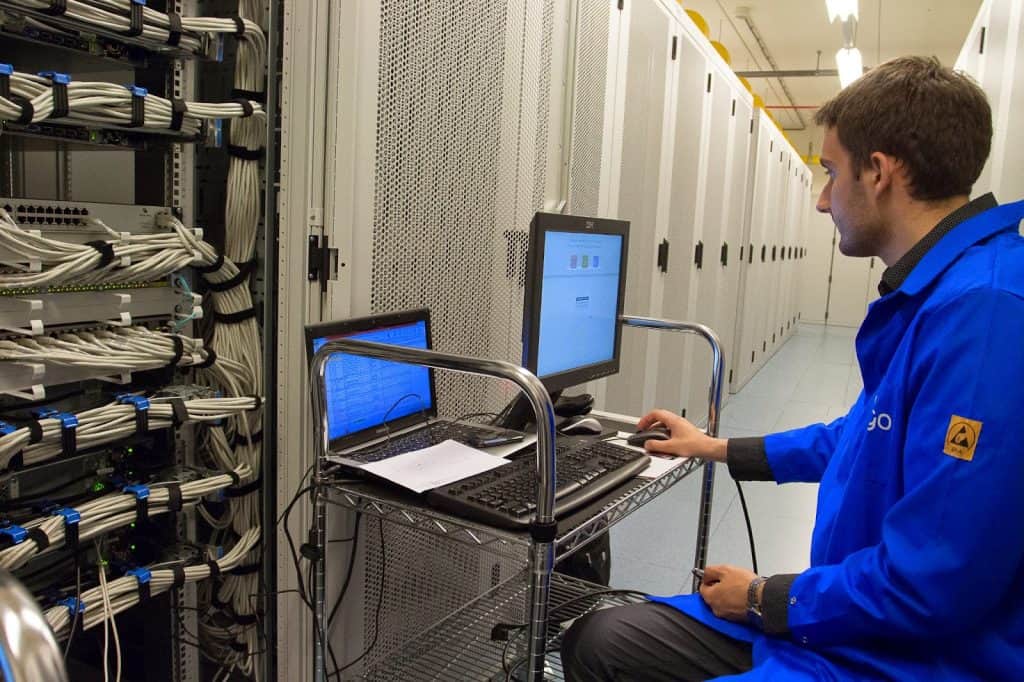
Mykola Derevyanko and the Secret of Why the Head of PortaCare and the Head of the PortaOne Development Team Can Come to Agreement
Mykola Derevyanko was one of the earliest employees in Chernihiv. He is that “Chernihiv gem,” proving why the founders’ decision to open an office there was a good idea. “After graduating from Chernihiv Poly, I started working there as an aspirant [Ukr.-Eng. for a postgraduate researcher]. I worked mostly night shifts and on weekends. A three-day working schedule usually meant I had at least some work days open for research work at the university. Then I joined PortaOne full-time in 2009,” Mykola recalls.
Administrating FreeBSD Servers at Chernihiv Poly, Then at PortaOne
Mykola’s academic and practical focus at the university was FreeBSD. “At first, I studied as an electronics engineer. All of my programming at the university was Pascal and microcontrollers. Then, I started as a sysadmin at the university. I administered over a dozen FreeBSD UNIX servers,” he says.
The FreeBSD experience was crucial when joining PortaOne because we unwillingly transferred from FreeBSD to Oracle Unbreakable Linux. (Since official software libraries, which allow applications to connect to the Oracle database, were only available for Linux.)
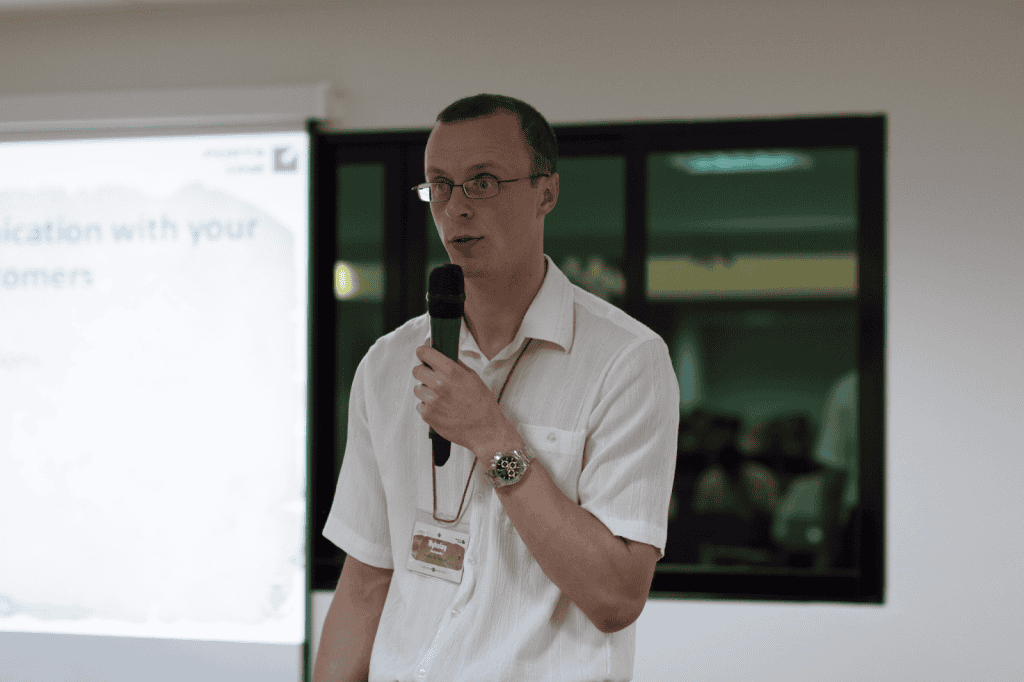
“Please indicate that my experience is irrelevant and PortaOne now discourages employees from exhausting themselves by simultaneously working academic and practical jobs,” Mykola modestly notes. “My first computer? I started working with computers at the university. Our family had no money to get me a personal computer in school. We had some TV add-on boxes at school in the 1990s, but that was ancient technology. It was not enough to run any serious software. My first real computers were those I administered. That was also my first Internet experience.”
Dev Lead + PortaCare Lead = All-in-One
The “dual karma” seems to keep on following Mykola. In 2022, the position of head of support became vacant. The PortaOne board made an unusual decision. “Despite managing the war disruption well, PortaOne faced tough times. We required outside-of-the-box decisions,” explains Andriy Zhylenko.
“Head of support and head of development are two positions bound for a clash. However, they are also two sides of a similar universe — creating and supporting software that our customers love,” explains Mykola. That’s why Mykola currently leads both departments: development and support.

“In the end, those two dudes can agree… yet not always,” jokes Mykola.
“We are getting support-oriented development and development-oriented support,” adds Andriy Kosachenko, CTO of PortaOne. This is a humorous but temporary situation. However, it demonstrates the superpowers of our chief software architect, Mykola Derevyanko.
Learning Some Soft Skills to Lead PortaCare Better. Then, Performing a Corporate Downshift to Project Manager and Low-Code Guru
We end this part of our ongoing Support Saga with an exciting revelation that came up during an interview with Serhii Kirik. “When I was 20, I thought the only thing that mattered was math, physics, and algorithms. However, being over 40 now, I realize things like empathy, love, friendship, and building and maintaining human connections also matter. As a ‘young genius,’ I was constantly pressured to exceed expectations. It left very little time for the actual me. After marrying and starting a family, I had to learn some non-math skills at a mature age.”
Interestingly, much like Mitchell Hashimoto of Hashi Corp, in 2015, Serhii stepped down from management to focus on his family (he has three kids now, all boys) and provide integration-level consulting at PortaOne. You can regularly hear from him at our customer conferences.
More stories from the previous days of PortaOne support and the people behind it are coming soon. Please contact sales@portaone.com to get a demo of our products and discuss your PortaCare plan.

